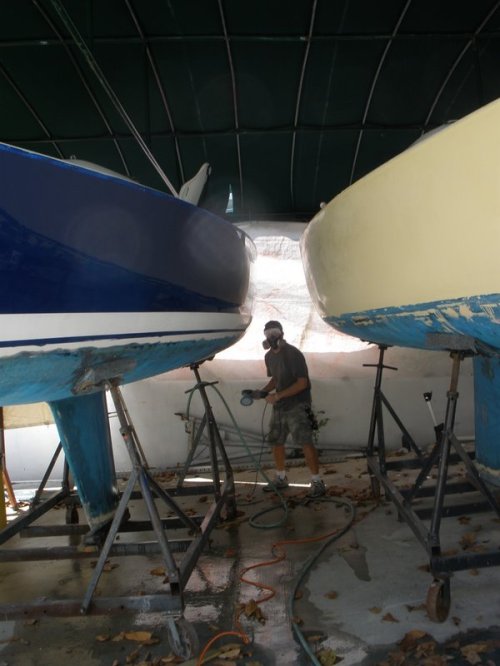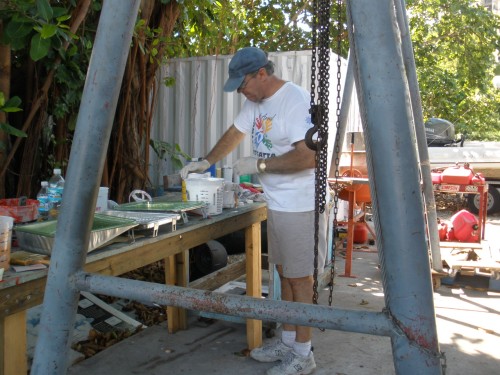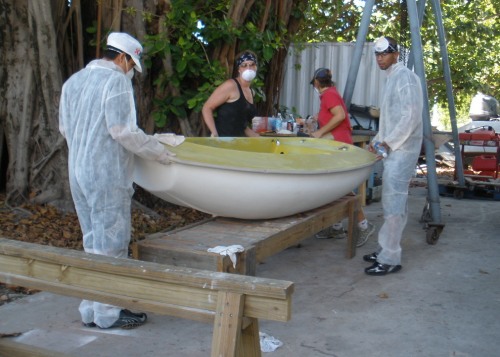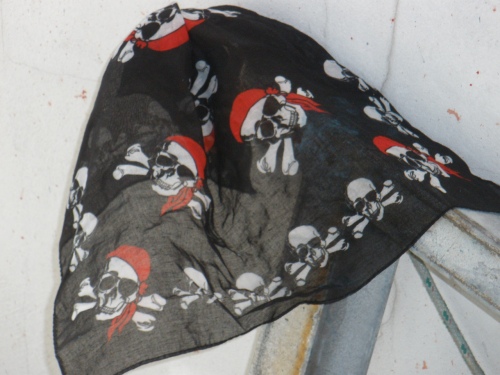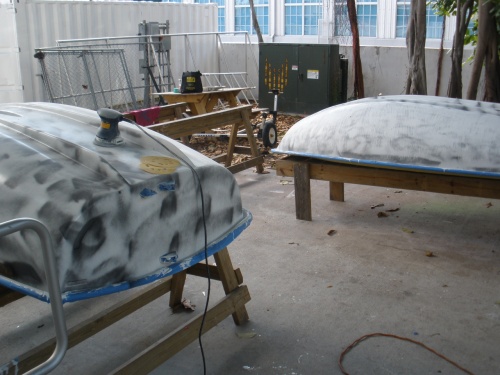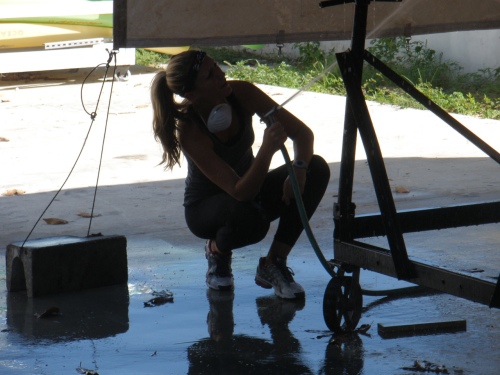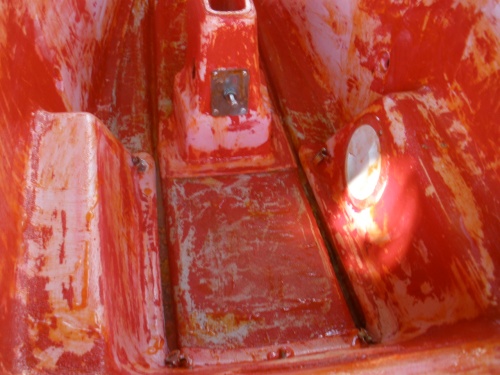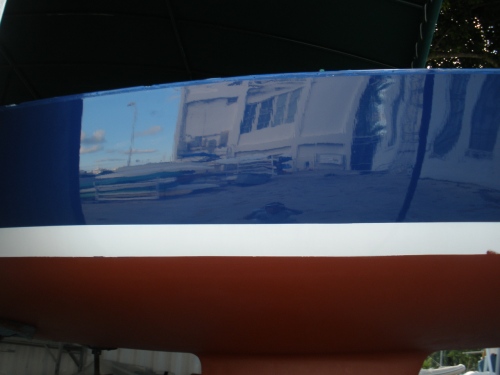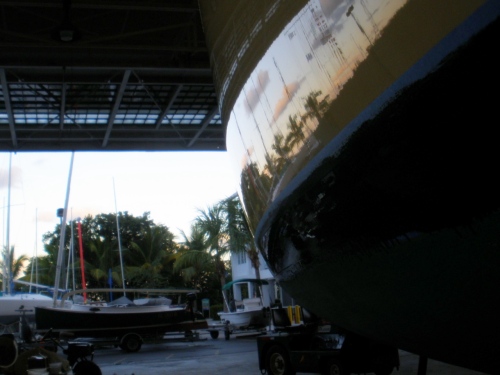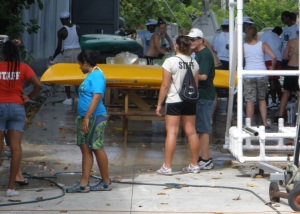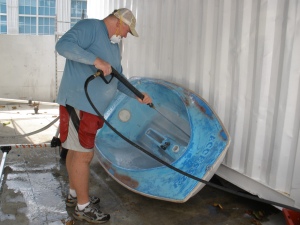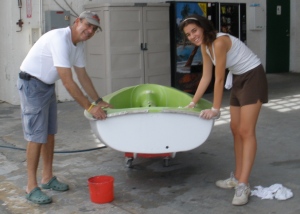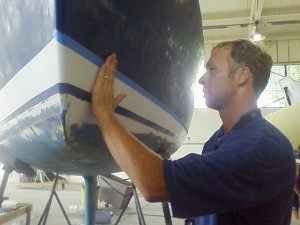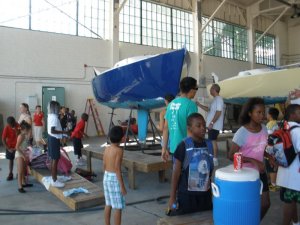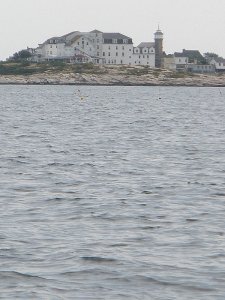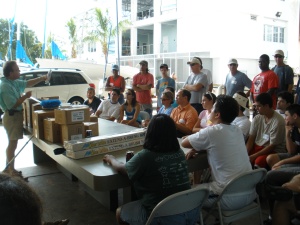October 11th has come and gone, and I am still sorting out my impressions of the Ship Shape project at Shake-A-Leg Miami. I spent a lot of time reviewing my 300-plus photos as I prepared a slide show for the SALM booth at IBEX, and I think they tell a great story about volunteers coming together to learn new skills and to contribute some serious elbow grease to the program.
If you would like to see my pictures, click here.
I especially want to thank our industry partners, including Bill Lindsey (Star brite), Joe Purtell (Interlux), Steve Morton (Performance Marine Coatings), and Norman Katz (Katzscan) for their support.
So, what did we accomplish? Here’s the tangible stuff: We painted topsides, boot stripes, and bottoms of two Freedom 20s. Number Two is our “Fighting Lady Yellow” vessel, and Hagen’s Hope (Number Eight) is our red-white-and-royal-blue sloop.
They both now outshine any other boat in the the SALM fleet, with the possible exception of our Green Machine Access dinghy. Soon those Freedoms will be back in the water, and they will be beautiful to behold out on Biscayne Bay.
We also did a lot of work on Access dinghies, proving how well a little well-applied paint can give new life to an old hull. We did a lot of stripping and sanding, and soon those dinghies will be restored to their original interior colors.
What else? Many of us who took part in several of our paint-a-thons gained some new friends and enjoyed nurturing those connections. One thing in particular that drew us together was the ever-changing landscape of our work area and our work assignments. Creativity reigned, as we often had to solve immediate problems that went far beyond how much reducer we needed for the best possible flow.
We dealt with hot weather, locked-up tools, shortages of supplies, and who to call for pizza. We drank an excessive amount of Coke Zero, wore pirate bandanas (well, some of us did), learned more than we ever wanted to know about differing types and grades of sandpaper, and learned that masking tape is our friend.
We “egyptianed” 20-ft boats from side yard to hangar and back again. We panicked when our brushes lost hairs and our rollers crumbled. We learned to work fast to beat the heat, and we learned to work in teams, reminding each other that there is no “you” in team.
We learned what a difference having the right tools and the best support can make to a project. We learned that gloss is more than a state of mind.
I hope that every volunteer who took part at any point in the project will continue to participate in Ship Shape.
On the other hand, for a number of reasons, we did not achieve our goal of completing top-coat work on all nine Freedoms. And I’m not sure we really achieved our goal of establishing a core group of volunteer stewards for the fleet, people who are dedicated to learning the fine art of boat maintenance and repair and equally dedicated to passing on their skills. But maybe. I know this weekend we’ll have a few “regulars” at work in the hangar, preparing more Access dinghies for painting, and I hope that will continue every weekend.
Also, I did not achieve my own work-related goal of developing any new content for ProBoat E-Training, and that’s a big disappointment to me. At some juncture during our count down, the focus of the project shifted from process (training) to product (painting). There are a number of reasons why that happened, and I know most of them by heart. I often left the worksite feeling discouraged because of that shift, but I never left without being thankful and happy to have met so many great volunteers and associates.
By the way, the event on Oct 11 was a great success, with a wonderful swarm of people enjoying a balmy night at Shake-A-Leg Miami, tasting Kiwi BBQ and sushi, thoroughly enchanted by their visit to the Gateway to Biscayne Bay.
Thanks to everyone who took part in this first Phase of the Ship Shape Project. I hope we’ll have many more chances to meet and work together for the good of the Shake-A-Leg Miami community.
